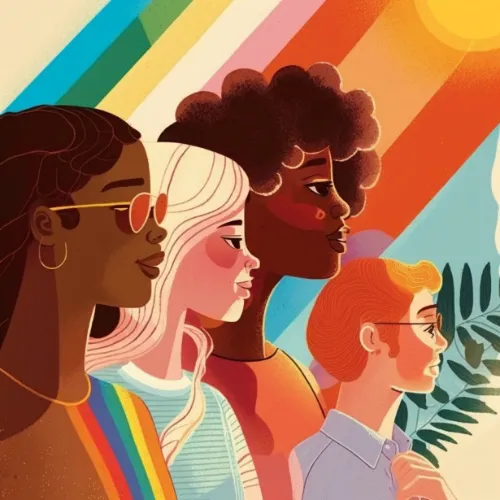
The Importance of Diversity for Mental Health
In recent years, the conversation around mental health has expanded — and rightfully so. But
one essential piece of the puzzle still doesn’t get enough attention: diversity. True mental
wellness cannot exist in a vacuum; it requires an environment where people of all backgrounds
feel seen, valued, and safe to be their authentic selves.
1. Understanding Diversity Beyond Appearances
Diversity isn’t just about race, ethnicity, or gender. It includes differences in culture, religion,
sexual orientation, ability, socioeconomic background, worldview, and lived experience.
Each person carries a unique story and those stories shape how they experience the world,
process trauma, and seek healing.
When we recognize and respect that diversity, we create a foundation for empathy, curiosity, and
understanding all of which are vital components of both personal and collective mental
health.
2. Creating Safety and Belonging as a White Therapist
While representation is important, safety and trust in therapy are built through intention,
humility, and genuine care. As a white therapist, I recognize that my clients’ experiences may
include layers of systemic and cultural trauma that I have not personally lived through. My role
is not to speak for or over those experiences, but to listen deeply, honor them, and make space
for truth without defensiveness or assumption.
Creating a safe environment starts with self-awareness continually examining my own
biases, privileges, and blind spots. It means being willing to sit with discomfort, to learn from my
clients and colleagues of color, and to view every therapeutic relationship as a mutual space for
growth and understanding.
Safety also comes from transparency: being open about intentions, validating lived experiences,
and inviting feedback about what feels supportive or not. It’s a practice of humility — to listen
more than I speak, to learn rather than assume, and to ensure that my office, language, and
approach communicate “You belong here exactly as you are.”
3. The Role of Community and Belonging
Social connection is one of the strongest predictors of psychological well-being. Yet for many
people, experiences of discrimination or exclusion can lead to chronic stress, anxiety, and
depression. Diverse and inclusive communities provide protective buffers reminding
individuals that they belong, their experiences are valid, and they are not alone.
When we build communities that celebrate difference, we promote collective healing. Diversity
fuels compassion, creativity, and resilience all of which enhance our shared humanity.
4. Diversity Makes Us Stronger as Teams and Practitioners
In professional and therapeutic settings, diversity doesn’t just make us more inclusive — it
makes us more effective. When teams are composed of people with different cultural
backgrounds, life experiences, and perspectives, they bring a wider range of insight to problem-
solving and client care.
Diverse teams are more adaptable and empathetic because they draw from a broader
understanding of human experience. This richness of perspective allows us to see clients more
fully and respond to their needs more holistically. It challenges groupthink, encourages
collaboration, and ultimately strengthens the quality of care and connection we can offer.
The Importance of Diversity for Mental Health
In recent years, the conversation around mental health has expanded — and rightfully so. But
one essential piece of the puzzle still doesn’t get enough attention: diversity. True mental
wellness cannot exist in a vacuum; it requires an environment where people of all backgrounds
feel seen, valued, and safe to be their authentic selves.
5. Systemic Awareness in Mental Health
Acknowledging diversity also means acknowledging the systems of inequality that impact
mental health outcomes. Factors like racism, poverty, homophobia, or ableism contribute to
chronic stress and trauma. Culturally responsive care doesn’t ignore these realities — it
addresses them directly, creating space for empowerment and resilience.
As providers, advocates, and allies, it’s our responsibility to challenge the systems that
perpetuate harm and to cultivate spaces that affirm every person’s dignity and worth.
6. Embracing Diversity as a Path to Collective Wellness
At its core, diversity invites us to expand our capacity for compassion to see others as
reflections of ourselves. It challenges us to grow, to listen, and to honor the many ways humans
heal and connect.
When we embrace diversity, we don’t just improve individual outcomes; we strengthen the
collective mental health of our communities, our teams, and our society.
In essence: diversity isn’t just a social goal it’s a mental health necessity. Healing happens
when everyone has a seat at the table, when every voice is valued, and when our shared
humanity becomes the bridge to understanding.
In essence: diversity isn’t just a social goal it’s a mental health necessity. Healing happens
when everyone has a seat at the table, when every voice is valued, and when our shared
humanity becomes the bridge to understanding.
